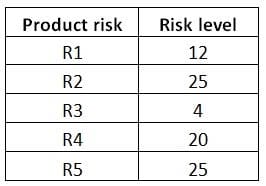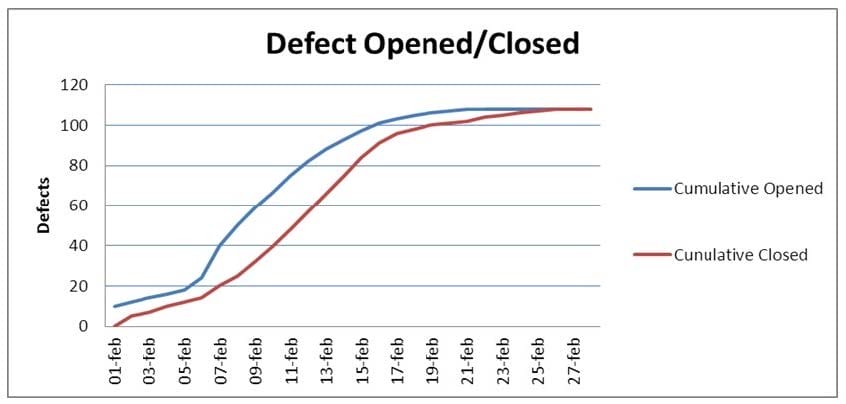
ATM Exam Questions & Answers
Exam Code: ATM
Exam Name: Advanced Test Manager
Updated: Apr 19, 2024
Q&As: 64
At Passcerty.com, we pride ourselves on the comprehensive nature of our ATM exam dumps, designed meticulously to encompass all key topics and nuances you might encounter during the real examination. Regular updates are a cornerstone of our service, ensuring that our dedicated users always have their hands on the most recent and relevant Q&A dumps. Behind every meticulously curated question and answer lies the hard work of our seasoned team of experts, who bring years of experience and knowledge into crafting these premium materials. And while we are invested in offering top-notch content, we also believe in empowering our community. As a token of our commitment to your success, we're delighted to offer a substantial portion of our resources for free practice. We invite you to make the most of the following content, and wish you every success in your endeavors.

Download Free ISTQB ATM Demo
Experience Passcerty.com exam material in PDF version.
Simply submit your e-mail address below to get started with our PDF real exam demo of your ISTQB ATM exam.
![]() Instant download
Instant download
![]() Latest update demo according to real exam
Latest update demo according to real exam
* Our demo shows only a few questions from your selected exam for evaluating purposes
Free ISTQB ATM Dumps
Practice These Free Questions and Answers to Pass the Test Manager Exam
Assume that you are the Test Manager for a small banking application development project.
You have decided to adopt a risk-based testing strategy and 5 product risks (R1, R2, R3, R4, and R5) have been identified during the quality risk analysis.
The following table shows the risk level associated to these product risks (higher numbers mean higher risk):

55 test cases have been designed and implemented to cover all these 5 product risks. The coverage is
described in a traceability matrix.
This is the test execution status table, after the after the first week of test execution:
About 56% of the planned test cases have been successfully executed.
Assume that no additional product risks have been identified during the first week of test execution.

Which of the following answers would you expect to best describe the residual risks associated with the identified product risks, at the end of the first week of test execution?
K3 2 credits
A. Since R3 is the only risk for which all test cases have passed, the risk has been reduced by 20%
B. The test execution status table indicates that the risk has been reduced by 56%
C. The residual risk level can't be determined, because it requires that all the test cases have been executed
D. The test execution table doesn't give an indication of the risk level of the open defects and the test cases that failed or are not run yet
Assume you have some data related to confirmation testing during system testing of a past project.
In that project 240 bug reports have been opened once, 80 were opened twice, 10 were opened three
times and no bug reports have been opened more than three times.
You estimate that a bug report, which has failed its confirmation test, costs, on average, 3 person-hours.
Which of the following statements correctly describe the value of these confirmatory testing activities based
on cost of quality? K3 2 credits
A. 300 person-hours have been spent on the project during the system testing phase, because of the failed confirmation tests and this cost belongs to the costs of internal failure
B. 340 person-hours have been spent on the project during the system testing phase, because of the failed confirmation tests and this cost belongs to the costs of external failure
C. 340 person-hours have been spent on the project during the system testing phase, because of the failed confirmation tests and this cost belongs to the costs of internal failure
D. 300 person-hours have been spent on the project during the system testing phase, because of the failed confirmation tests and this cost belongs to the costs of detection
The following chart plots the cumulative number of defects opened against the cumulative number of defects closed during system testing of a software product.

Which of the following statements is true? K2 1 credit
A. The chart indicates that you have plenty of problems left to find
B. The chart can be used to reveal test progress problems
C. The chart seems to indicate that the defect management process is not working well
D. The chart seems to indicate that the defect management process is working well
Which of the following statements describing how identified product quality risks should be mitigated and managed, is true?
K2 1 credit A. The extent of re-testing and regression testing activities should be based on the risk level
B. The identification of new risks, the re-assessment of the level of existing risks and the evaluation of the effectiveness of risk mitigation activities should only occur at the very beginning of a project
C. Risk mitigation of product quality risks can be effective only after starting test execution
D. The priority of the development and execution of tests should not be based on the risk level but only on the likelihood
Which of the following information would you expect to be the most useful to perform a defect clustering analysis?
K2 1 credit
A. The trend in the lag time from defect reporting to resolution
B. The defect component information
C. The lifecycle phase in which the defect has been introduced
D. The defect removal efficiency information
Viewing Page 3 of 3 pages. Download PDF or Software version with 64 questions

